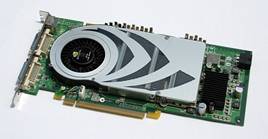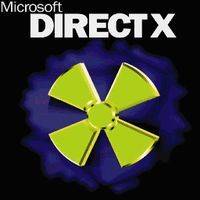| Your Account | Shopping Cart | Checkout | ||||||||||||||||||||||||||
 | ||||||||||||||||||||||||||
|
| ||||||||||||||||||||||||||
< Back to Hardware Guide
How to choose a Graphic Card?A Brief Guide As the name suggests, the Graphics Card is responsible for the visual performance of your computer. A Graphics Card is the component you add to your Main Board to send signals to your Monitor.People often find it hard to describe the level of performance they want their Graphics Card to have. Most people want crisp images with vibrant colours but bear in mind that a good Monitor contributes to that as well. In terms of graphics display, it is important to know what your Monitor and Graphics Card is responsible for individually and the relationship between the two components.The Graphics Card is responsible for extracting the information from your CPU before sending it to your Monitor. In other words, your Graphics Card accepts signals from your CPU, makes the necessary commands to set colours and transparencies and then sends the image to your Monitor via signals. Your Monitor is responsible for displaying the signals it received from your Graphics Card as best as it could. As the name suggests, the Graphics Card is responsible for the visual performance of your computer. A Graphics Card is the component you add to your Main Board to send signals to your Monitor.People often find it hard to describe the level of performance they want their Graphics Card to have. Most people want crisp images with vibrant colours but bear in mind that a good Monitor contributes to that as well. In terms of graphics display, it is important to know what your Monitor and Graphics Card is responsible for individually and the relationship between the two components.The Graphics Card is responsible for extracting the information from your CPU before sending it to your Monitor. In other words, your Graphics Card accepts signals from your CPU, makes the necessary commands to set colours and transparencies and then sends the image to your Monitor via signals. Your Monitor is responsible for displaying the signals it received from your Graphics Card as best as it could. GooGoo ExplainsA Graphics Card makes use of a VGA (Video Graphics Array) port to output analog signals. Recently, a new digital connection, called the DVI, has been replacing the VGA as the new industry standard. DVI is usually found on Flat-screen monitors and has a much better signal quality. When choosing a Graphics Card, check to see if you will need DVI connections. It is cheap to buy an adapter to convert a DVI signal down to VGA but not the other way round. In fact, most DVI capable video cards already come with adapters. In other words, if you plan on purchasing a DVI-based Monitor, projector, or TV, it’s wise to buy a Graphics Card with a DVI port for your computer or home theatre system.
Top: VGA port The quality of your Monitor largely determines the clarity of the images you see. The primary job of the Graphics Card is to prepare images for your Monitor to display. With a Graphics Processor Unit (GPU), memory and cooling system, the Graphics Card is like a secondary Main Board that helps with drawing up all images, leaving the Processor free to perform other tasks. Since the Graphics Card is like a miniature computer system, it’s difficult to measure its overall speed with a single number. Its performance can be measured in terms of clock speeds, RAM, cache, pixel pipelines and a host of other technical specifications. And to make things worse, Graphics Cards are getting more complex now with the rapid release of newer and faster cards. Here is a few important Graphics Card Specs to think about you are deciding on a Graphics Card: Core Clock – The speed of the GPU. Memory Type – There are two types that are relevant now. The DDR2 SD-RAM is an improvement of its predecessor, DDR, but it is hampered by clock speed limitations. The hottest memory for high-end Graphics Cards currently is the GDDR3 memory, which was designed specifically for Graphics Cards and can run higher clock speeds at lower temperatures compared to the DDR2 RAM. Memory Clock – The speed of your Graphics Card memory. It is measured in megahertz. Even small increases in memory speed can affect your gaming experience dramatically.
Picking a Graphics CardThe two major chipmakers ATI and nVidia are always head on against one another on every chip they release, each time making significant improvements. Hence, choosing a Graphics Card nowadays is very difficult. And we’re not even talking about all the other brands out there such as Leadtek, Sapphire, Asus etc. If you add up all the Graphics Card available in the market, it may well hit over 200. Here, we will try to help you find one that will suit your needs and budget.If you already have two Graphics Cards to choose between, the easiest way to do this is to make benchmark comparisons between them. This excellent tool from Tom’s Hardware will let you do just that. Just follow the link below: http://www23.tomshardware.com/graphics.html
Here’s a list of points to consider when you are choosing a Graphics Card.1. Do you game?Splinter cell: a game greatly enhanced with a great Graphics Card If you have chosen a Main Board based on the nForce Chipset, it may be better to purchase a Graphics Card made by the same company (nVidia) making compatibility problem a non issue. You can still purchase an ATI card to pair up with an nForce Chipset Mainboard but trust me, when problems occur, it may be more difficult to resolve as both Chips are manufactured by two different companies. And if you choose a Main Board that uses SLi* technology, go with a nVidia Graphics Card. Similarly, if you have chosen an ATI Crossfire* Main Board Chipset, try to pair it up with an ATI Graphics Card to take full advantage of the technology. *SLi / Crossfire – a new technology by nVidia and ATI respectively to use 2 identical Graphics Cards on a PC to increase performance by as much as 70%. What you will need is a Main Board to support this technology and 2 identical Graphics Cards that support the SLi or Crossfire technology. 3. Connection As mentioned earlier, take note of the type of connections your card has. If you plan to buy a DVI Monitor, buy a video card with the appropriate connection. 4. Memory Having more than 256MB of memory in your Graphics Card yields little or no improvement in performance so 128 MB or 256 MB is usually enough.Another point is memory interface (measured in 64 bit, 128 bit, or 256 bit). Try not to buy a Graphics Card with only 64 bit memory interface as another $50 for a 128 bit Graphics Card can give you a performance increase of about 30%.
| ||||||||||||||||||||||||||
Performace |
Price Range ($) |
Low-end |
80 - 100+ |
Mid-range |
200+ - 400+ |
High-end |
400+ - 1000 |
GooGoo Recommends
nVidia
Turbo Cache |
LE |
XT |
GS |
GT |
GTX |
GX2 |
nVidia Graphics Card suffix sort from low-end to high-end (Left to Right)
The GT, GTX and GX2 series come with the GDDR3 memory – the latest and fastest memory for high-end Graphics Cards. GTX and GX2 are all high performance cards.
Be wary when purchasing the Nvidia TurboCache series as the RAM stated on the box does not mean its actual physical RAM but rather what it has after ‘borrowing’ from the system Memory. For example, a Turbo Cache model may feature 256 MB but has only 64 MB on the Graphics Card. The other 192 MB will be taken off your system. If you only have 512 MB of Memory on your PC, you are practically left with 320 MB of system Memory which is too little for current PC usage. We advise users against buying such Graphics Cards.
ATI
SE/HM |
GE |
GT |
Original |
GTO |
PRO |
XL |
XT |
XTX |
ATI Graphics Card suffix sort from low-end to high-end (Left to Right)
ATI lower-end Graphics Cards with the ‘SE’ suffix use the same technology as the fore-mentioned Nvidia TurboCache cards. Buy those at your own peril!
Note that the XT is a suffix for lower-end Nvidia cards while it is a suffix for higher-end cards for ATI.
The Graphics Card is one of the most complicated components in your PC. Though we have only scratched the surface in our guide, we hope we have explained enough for you to make an informed choice. Please email ‘Dr Goo’ if you have any more queries.
The above guide is provided as a free service to our customers and visitors. All information is written as objectively and accurately as possible. GooGoo Custom Computers are not responsible for any undesirable computer assembly outcomes resulted from reading our hardware guide.
|
Ordering Help |
Delivery & Returns Help |
Store's Help |
© 2006-2024 GooGoo Custom Computers. All rights reserved

 If you don’t play 3D games, you may well be off using the on-board Graphics Card provided by some Main Board. On-board graphics is most suitable for web browsing, emailing, word processing and nothing else. A point to note that is that on-board Graphics Cards utilize your system memory to work. Purchase more RAMs if you intend to use on-board graphics though we recommend that it is always better to get even the cheapest graphics card to take some workload off the Processor. If you are an avid gamer and demand the best in graphics, go for a mid to high-end Graphics Card. Remember that 3D graphics editing programs such as CAD and CAM will require a good Graphics Card as well.
If you don’t play 3D games, you may well be off using the on-board Graphics Card provided by some Main Board. On-board graphics is most suitable for web browsing, emailing, word processing and nothing else. A point to note that is that on-board Graphics Cards utilize your system memory to work. Purchase more RAMs if you intend to use on-board graphics though we recommend that it is always better to get even the cheapest graphics card to take some workload off the Processor. If you are an avid gamer and demand the best in graphics, go for a mid to high-end Graphics Card. Remember that 3D graphics editing programs such as CAD and CAM will require a good Graphics Card as well. 